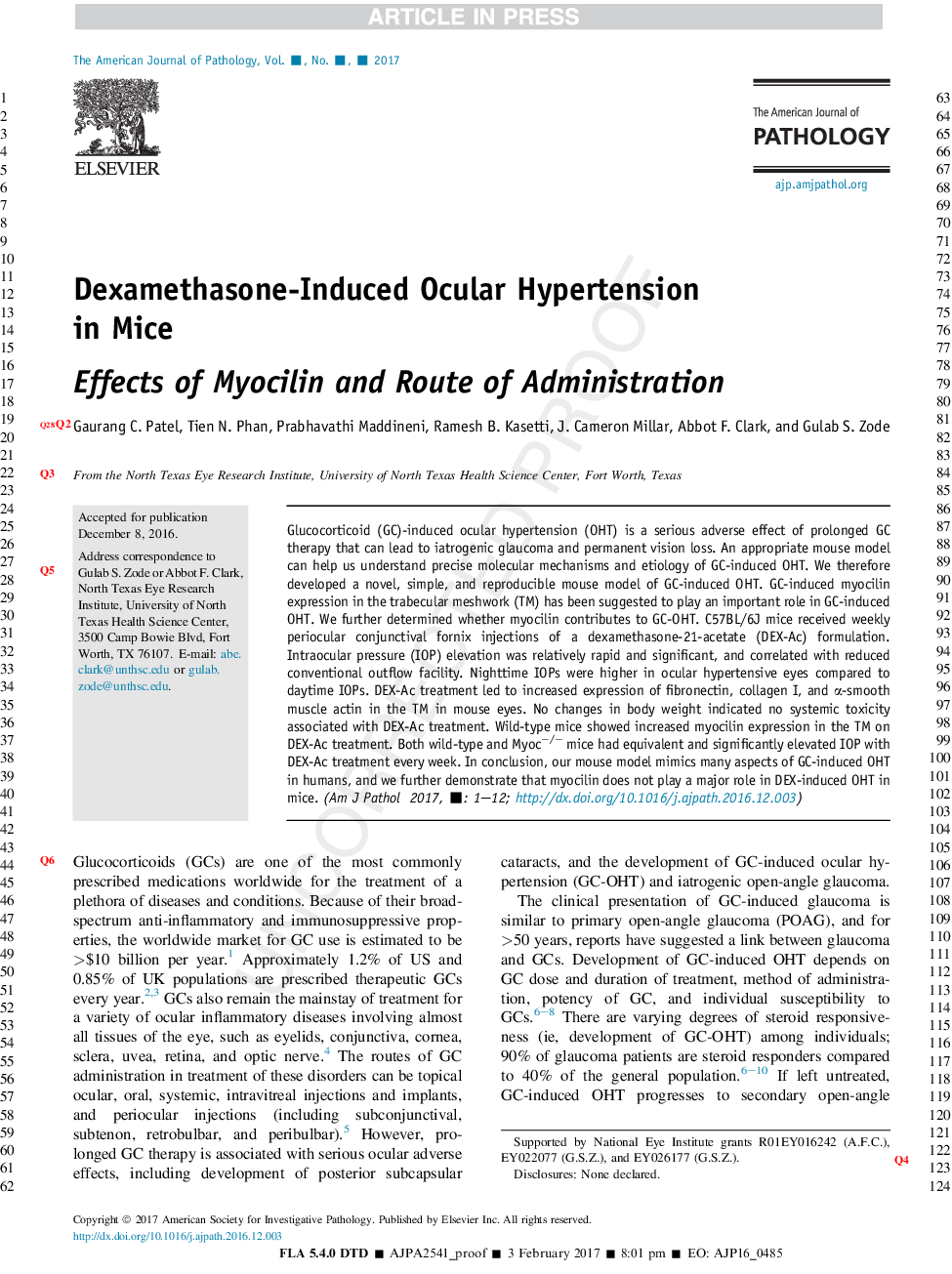| کد مقاله | کد نشریه | سال انتشار | مقاله انگلیسی | نسخه تمام متن |
|---|---|---|---|---|
| 5596162 | 1573356 | 2017 | 13 صفحه PDF | دانلود رایگان |
عنوان انگلیسی مقاله ISI
Dexamethasone-Induced Ocular Hypertension in Mice
ترجمه فارسی عنوان
فشار خون ناشی از دگزامتازون در موش
دانلود مقاله + سفارش ترجمه
دانلود مقاله ISI انگلیسی
رایگان برای ایرانیان
موضوعات مرتبط
علوم پزشکی و سلامت
پزشکی و دندانپزشکی
کاردیولوژی و پزشکی قلب و عروق
چکیده انگلیسی
Glucocorticoid (GC)-induced ocular hypertension (OHT) is a serious adverse effect of prolonged GC therapy that can lead to iatrogenic glaucoma and permanent vision loss. An appropriate mouse model can help us understand precise molecular mechanisms and etiology of GC-induced OHT. We therefore developed a novel, simple, and reproducible mouse model of GC-induced OHT. GC-induced myocilin expression in the trabecular meshwork (TM) has been suggested to play an important role in GC-induced OHT. We further determined whether myocilin contributes to GC-OHT. C57BL/6J mice received weekly periocular conjunctival fornix injections of a dexamethasone-21-acetate (DEX-Ac) formulation. Intraocular pressure (IOP) elevation was relatively rapid and significant, and correlated with reduced conventional outflow facility. Nighttime IOPs were higher in ocular hypertensive eyes compared to daytime IOPs. DEX-Ac treatment led to increased expression of fibronectin, collagen I, and α-smooth muscle actin in the TM in mouse eyes. No changes in body weight indicated no systemic toxicity associated with DEX-Ac treatment. Wild-type mice showed increased myocilin expression in the TM on DEX-Ac treatment. Both wild-type and Myocâ/â mice had equivalent and significantly elevated IOP with DEX-Ac treatment every week. In conclusion, our mouse model mimics many aspects of GC-induced OHT in humans, and we further demonstrate that myocilin does not play a major role in DEX-induced OHT in mice.
ناشر
Database: Elsevier - ScienceDirect (ساینس دایرکت)
Journal: The American Journal of Pathology - Volume 187, Issue 4, April 2017, Pages 713-723
Journal: The American Journal of Pathology - Volume 187, Issue 4, April 2017, Pages 713-723
نویسندگان
Gaurang C. Patel, Tien N. Phan, Prabhavathi Maddineni, Ramesh B. Kasetti, J. Cameron Millar, Abbot F. Clark, Gulab S. Zode,
